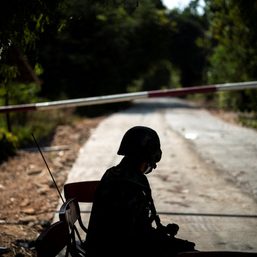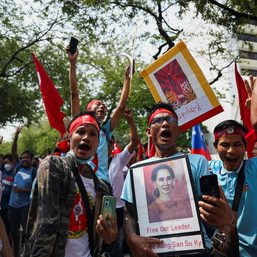SUMMARY
This is AI generated summarization, which may have errors. For context, always refer to the full article.

MANILA, Philippines (UPDATED) – Aegis Juris fraternity members further insisted on Thursday, November 16, that freshman law student Horacio “Atio” Castillo III did not die of hazing.
After the Manila Police District (MPD) released its histopathological report stating that severe blunt traumatic injuries caused Castillo’s death, the camps of John Paul Solano, Axel Munro Hipe, and Mhin Wei Chan filed affidavits of medical expert witnesses trying to say otherwise.
Lawyer and surgeon Floresto Arizala, former chief medico-legal at the National Bureau of Investigation (NBI), said it is “out of this world” to say that Castillo died of hazing. (READ: TIMELINE: Death of Horacio Castillo III from alleged Aegis Juris hazing)
‘Hearsay and speculative’
Arizala claimed that the “final” report signed by Philippine National Police (PNP) chief medico-legal Superintendent Joseph Palmero contained false findings.
“The pathologist [who] makes the finding that Horacio’s death is due to hazing has no personal knowledge about any alleged hazing and thus it is out of this world for him to make such kind of finding,” Arizala said, describing the findings as “hearsay and speculative.”
Aside from Arizala, the affidavits of two other expert witnesses were submitted – pathologist Bu Castro and physician Rodel Capule.
Arizala is Chan’s expert witness, Castro is Solano’s, and Capule is Hipe’s, but they all adopted each other’s witnesses as their own.
All 3 expert witnesses are pointing out that the disparities between the first medico-legal report and the final histopathological report are suspect.
The first medico-legal report was dated September 20, or 3 days after Castillo’s death, signed by the MPD’s Police Chief Inspector (PCI) Mesalyn Milagros Probadora. There, even though she did not indicate a cause of death, she made a finding of an enlarged heart.
Palmero’s report dated October 3 said there was “normal histology” in Castillo’s brain, heart, and spleen.
“The heart described in Medico-Legal Report No. M-2017-499 (Probadora’s September 20 report) is one-third heavier than the normal heart, and this is supported by the findings in the same Medico-Legal Report of twice thickened left and right ventricular walls,” Castro said.
Then he added: “This could not escape histopathological examination which in Histopath No. H17-042 (Palmero’s October 3 report) is reported otherwise.”
“In this specific situation, both gross and histopathologic reports must show the same findings, both reports should show either a normal heart or hypertrophied (enlarged) heart,” Castro said.
A histopathological report is a more detailed and more conclusive report. Forensics expert Raquel Fortun explained to Rappler that it is not unusual to have differences in the medico-legal and and histopathological reports.
But she did raise similar observations when asked by Rappler on November 9.
“The description of the heart, for example, raises such issues as: was it really that large weighing as much as 450 grams with the left ventricle as thick as 2.5 centimeters and yet the microscopic exam shows normal findings?” Fortun said. (READ: What different documents say on Atio Castillo’s cause of death)
‘Caveat’
Capule further analyzed Palmero’s report, highlighting the provisions where the PNP’s chief medico-legal said “the main histopathologic findings are directly but not specifically due to trauma.”
Palmero also said: “The opinion as to cause of death is limited [to] the data and tissue samples submitted at the time of examination.”
“In other words, Dr Palmero admitted that his opinion as to the cause of death of Castillo was not specifically due to trauma and was based merely on limited data and tissue samples,” Capule said.
To link cardiac failure, Palmero said in his report that the trauma inflicted on Castillo eventually resulted in “increased potassium in the blood and decreased calcium in the blood due to muscle trauma” which caused “immediate death from cardiac failure.” (READ: The different angles in Atio Castillo’s hazing case)
“While Dr Palmero’s opinion is plausible, it must be emphasized that not a single factual basis supports his opinion as to an increased level of potassium, low level of calcium, or electrolyte imbalance,” Capule said.
Capule added: “Not a single laboratory examination for serum potassium and serum calcium levels and electrolyte imbalance were performed before or after the death of Castillo.”
Solano included these affidavits in his rejoinder submitted to the Department of Justice (DOJ) on Thursday afternoon. He is still sticking to his claim that Castillo died of hypertrophic cardiomyopathy, supposedly a pre-existing heart condition.
“It is quite clear that there is an obvious irregularity in the preparation and presentation as evidence of the said Histopath Findings which precludes the application of the rule on the presumption of regularity of official acts,” Solano said.
You can read here the affidavits of Arizala, Castro, and Capule. – Rappler.com
Add a comment
How does this make you feel?





There are no comments yet. Add your comment to start the conversation.